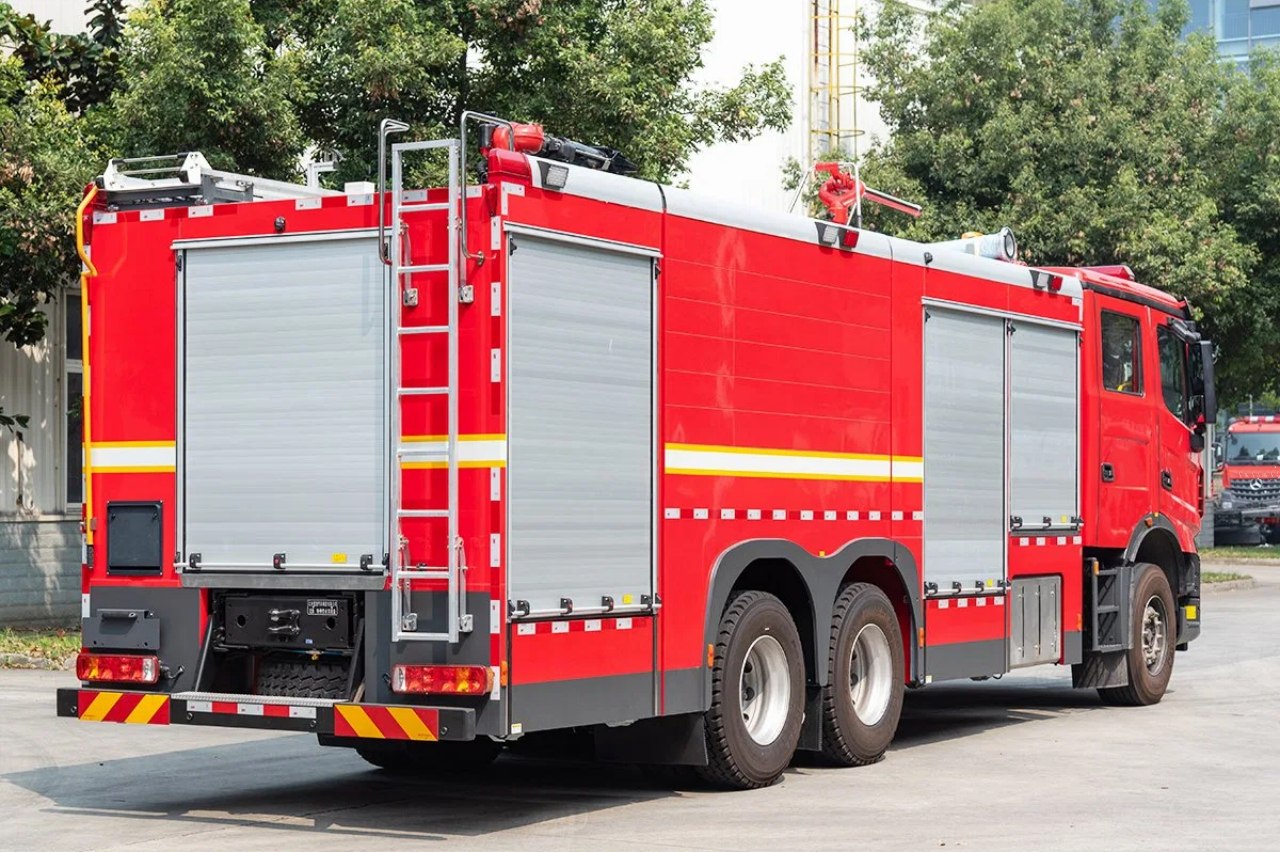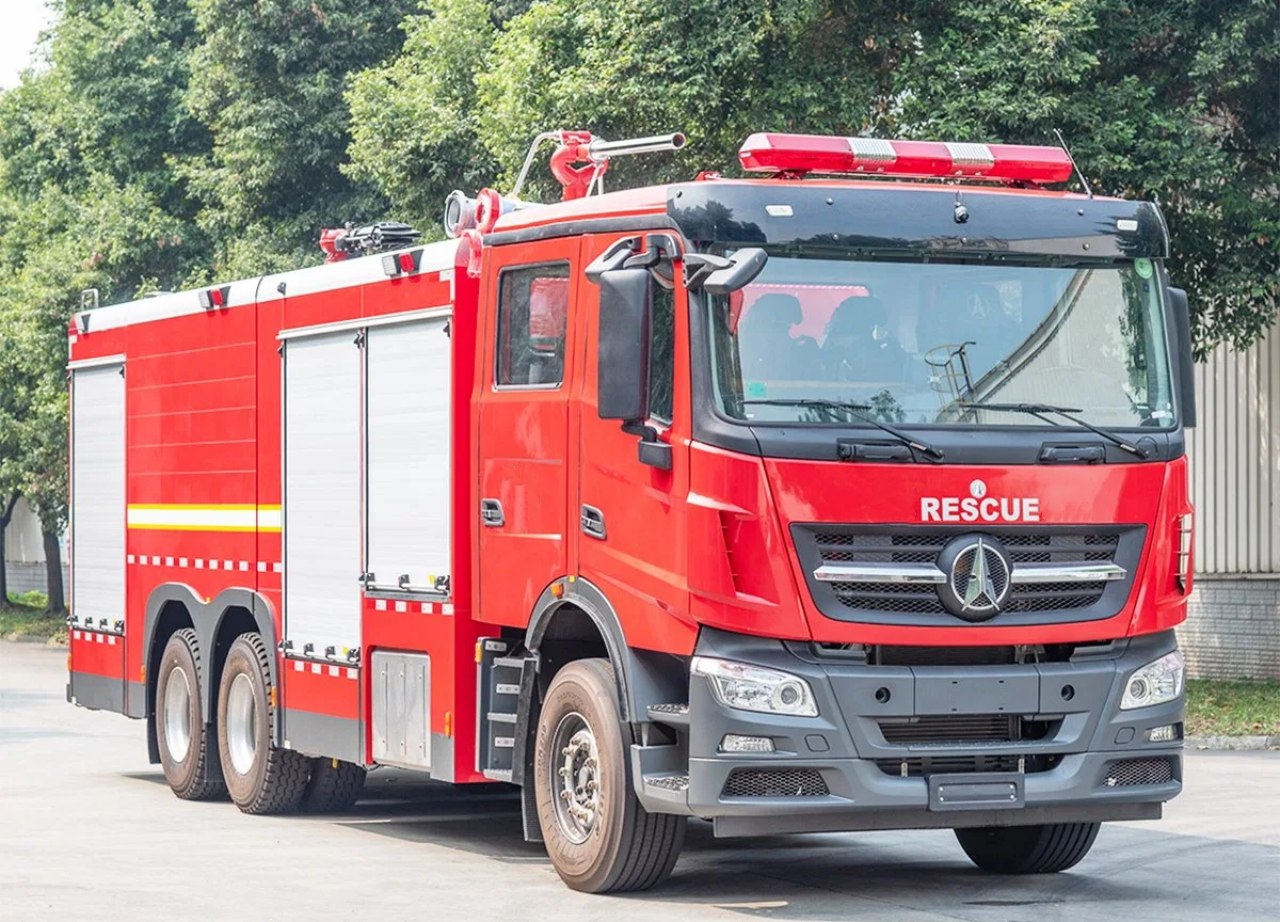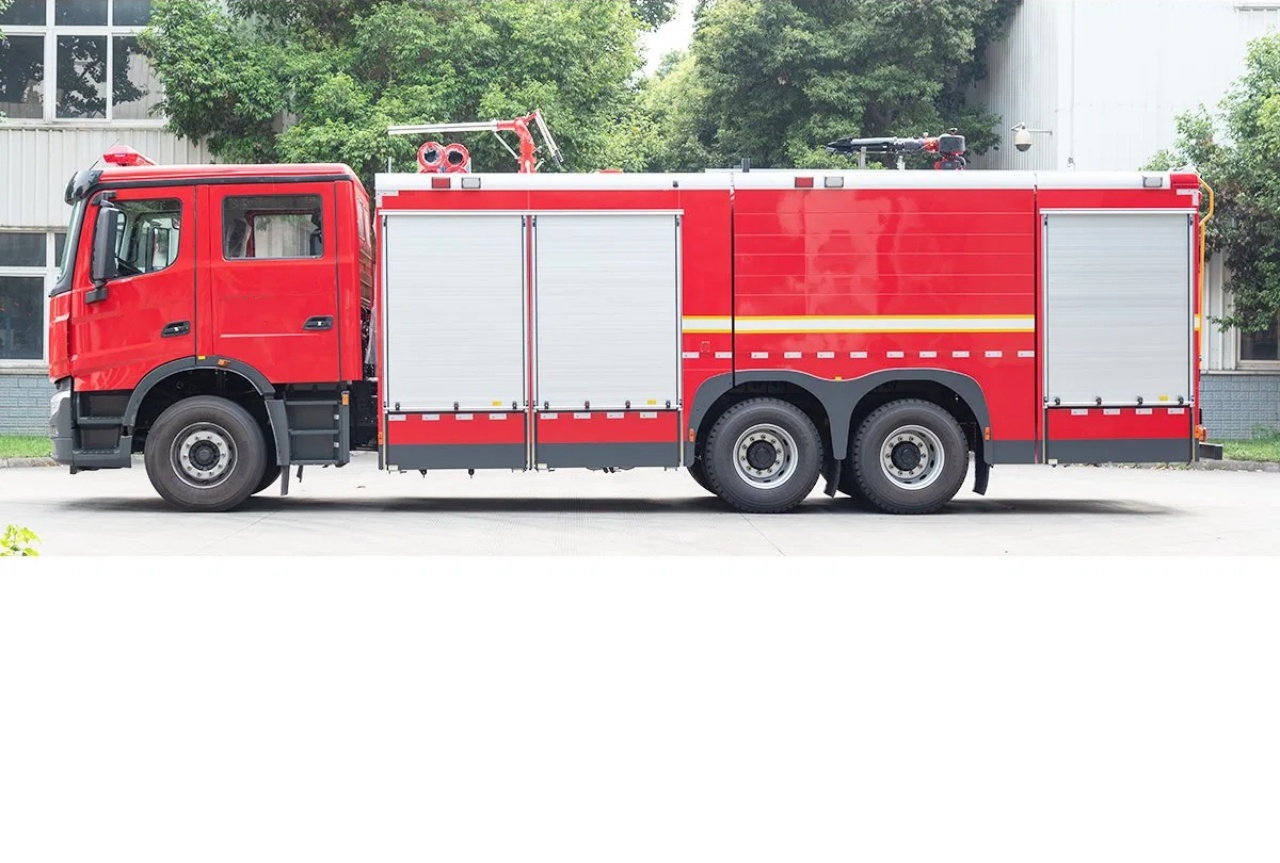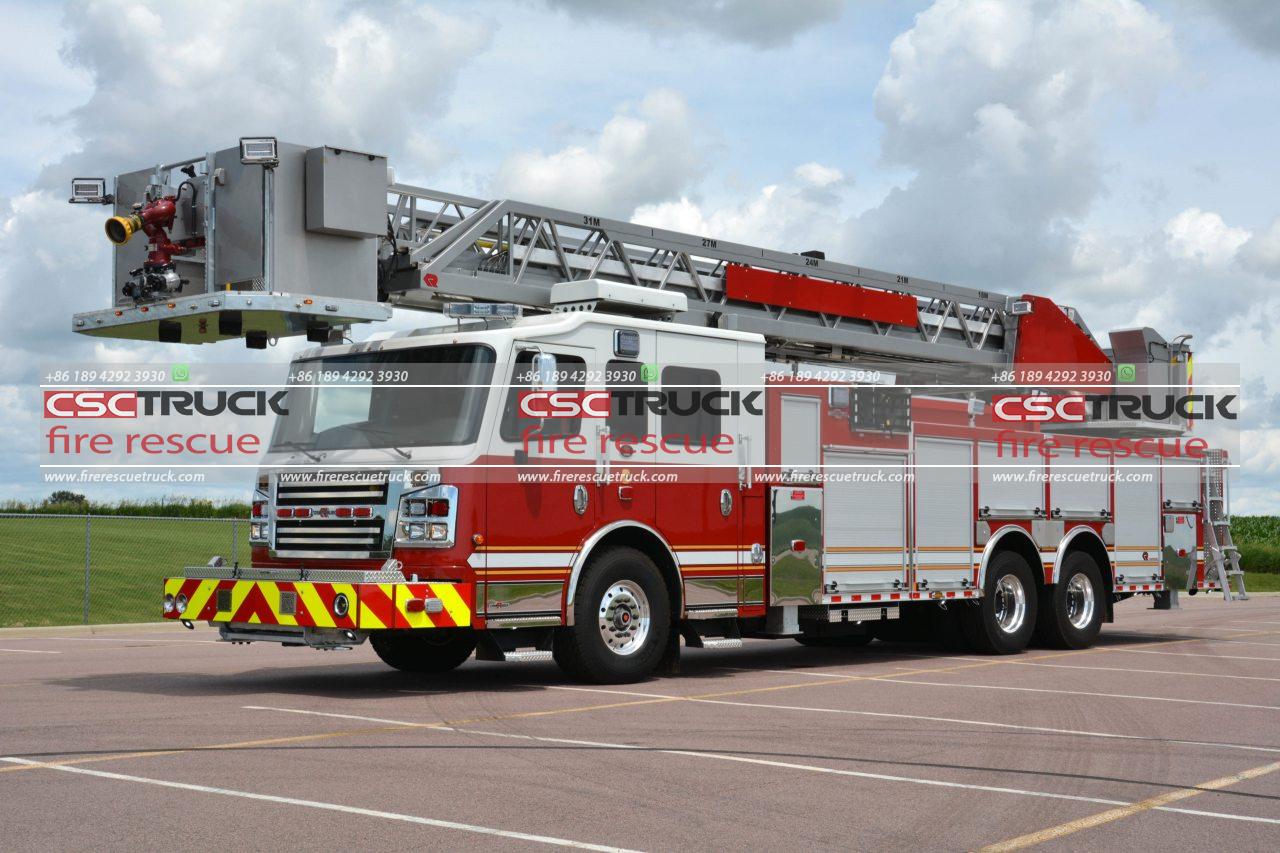Introduction
A chemical fire truck is a specialized firefighting vehicle designed to combat fires involving hazardous chemicals, flammable liquids, and other dangerous substances. Unlike conventional fire trucks, which primarily rely on water and foam, chemical fire trucks are equipped with advanced fire suppression agents, protective gear, and sophisticated systems to handle chemical spills, industrial fires, and hazardous material (HAZMAT) incidents.
In this article, we will explore the definition, purpose, components, types, and importance of chemical fire trucks in firefighting operations.
Purpose of a Chemical Fire Truck
The primary role of a chemical fire truck is to respond to fires and emergencies involving hazardous materials. These vehicles are essential in industrial settings, chemical plants, oil refineries, laboratories, and other environments where combustible and toxic substances are handled. The key objectives of a chemical fire truck include:
- Extinguishing Chemical Fires – Using specialized extinguishing agents such as dry chemicals, foam, or halon alternatives to suppress fires effectively.
- Neutralizing Hazardous Spills – Containing and neutralizing chemical spills to prevent environmental contamination and health risks.
- Protecting Firefighters – Providing specialized suits, breathing apparatus, and protective equipment to safeguard firefighters from toxic fumes and chemical exposure.
- Minimizing Damage – Reducing structural and environmental damage by preventing the spread of hazardous materials.

Components and Equipment of a Chemical Fire Truck
Chemical fire trucks are equipped with advanced firefighting tools and systems designed to handle hazardous situations. The primary components include:
1. Fire Suppression Systems
Chemical fire trucks use various suppression agents tailored to different types of chemical fires, including:
- Dry Chemical Powder – Effective for Class B (flammable liquids) and Class C (electrical) fires.
- Foam Systems – Aqueous Film-Forming Foam (AFFF) and high-expansion foam to smother flammable liquid fires.
- Gas-Based Suppression – Halon alternatives, such as clean agents (Novec 1230, FM-200), to extinguish fires without leaving residues.
- Water and Steam Injection Systems – Used in some models for specific fire suppression applications.
2. Protective Gear for Firefighters
Firefighters dealing with chemical fires require specialized protective equipment, such as:
- Hazmat Suits – Gas-tight and chemical-resistant suits for handling hazardous materials.
- Self-Contained Breathing Apparatus (SCBA) – Protects against inhaling toxic fumes and smoke.
- Gloves, Boots, and Face Shields – Ensuring full-body protection against chemical exposure.
3. Hazmat Detection and Monitoring Systems
Advanced sensors and detection tools help assess the situation and prevent secondary hazards:
- Gas Detectors – Measure levels of toxic gases and identify explosive atmospheres.
- Radiation Detectors – Monitor radiation exposure in hazardous areas.
- pH and Chemical Analysis Kits – Evaluate the nature of chemical spills.
4. Containment and Decontamination Equipment
- Spill Containment Kits – Absorbents, barriers, and neutralizers to contain chemical spills.
- Decontamination Showers and Wash Stations – For emergency cleansing of personnel exposed to hazardous substances.
5. Communication and Command Systems
- Two-Way Radios and Wireless Communication Systems – Ensure coordination among firefighters and emergency response teams.
- Incident Command Systems (ICS) – Allow integration with larger-scale emergency management operations.
Types of Chemical Fire Trucks
Different chemical fire trucks are designed for specific applications based on their intended use and the types of fires they are expected to combat.
1. Industrial Chemical Fire Trucks
Used in chemical plants, oil refineries, and manufacturing facilities, these trucks carry large quantities of specialized fire suppression agents, including dry chemicals and foam.
2. Airport Fire Trucks (ARFF – Aircraft Rescue and Firefighting)
These trucks are equipped to handle jet fuel fires and hazardous material leaks in aviation environments. They often have powerful turrets that spray fire suppression foam at high pressure.
3. Hazmat Response Trucks
These vehicles are designed for hazardous material containment and decontamination. They may not have traditional firefighting equipment but are crucial for mitigating chemical hazards.
4. Municipal Chemical Fire Trucks
Some fire departments operate hybrid fire trucks that handle both conventional and chemical fires. These vehicles may carry dry chemical agents along with standard water and foam systems.

Importance of Chemical Fire Trucks in Emergency Response
The deployment of chemical fire trucks is crucial in mitigating the risks associated with hazardous materials and industrial fires. Their significance includes:
1. Protecting Lives and Property
By quickly responding to chemical fires and hazardous spills, these trucks help prevent casualties and reduce damage to infrastructure.
2. Environmental Protection
Chemical fires and spills pose severe environmental risks. Chemical fire trucks help contain hazardous substances, preventing soil and water contamination.
3. Ensuring Compliance with Safety Regulations
Industries handling hazardous materials must adhere to strict safety regulations. Chemical fire trucks play a vital role in meeting emergency preparedness standards.
4. Supporting Fire Departments and Industrial Safety Teams
Municipal fire departments, industrial fire brigades, and private safety teams rely on chemical fire trucks for specialized emergency response capabilities.
Challenges in Operating Chemical Fire Trucks
Despite their advanced capabilities, chemical fire trucks face certain challenges, including:
1. High Cost of Equipment and Maintenance
The sophisticated systems and specialized agents in chemical fire trucks require significant investment and regular maintenance.
2. Training and Expertise Requirements
Operating these trucks requires extensive training in hazardous materials handling, firefighting techniques, and equipment operation.
3. Limited Availability and Deployment Challenges
Not all fire departments have access to chemical fire trucks, and deploying them to remote areas may be challenging.

Conclusion
Chemical fire trucks are essential emergency response vehicles designed to handle fires involving hazardous substances. With advanced fire suppression systems, protective gear, and monitoring equipment, they play a critical role in protecting lives, property, and the environment. While they require specialized training and investment, their presence is indispensable in industrial settings, airports, and high-risk environments.
Understanding the importance and functionality of chemical fire trucks ensures better preparedness for emergencies involving hazardous materials. As technology advances, these vehicles will continue to evolve, enhancing their effectiveness in firefighting and hazardous material management.







